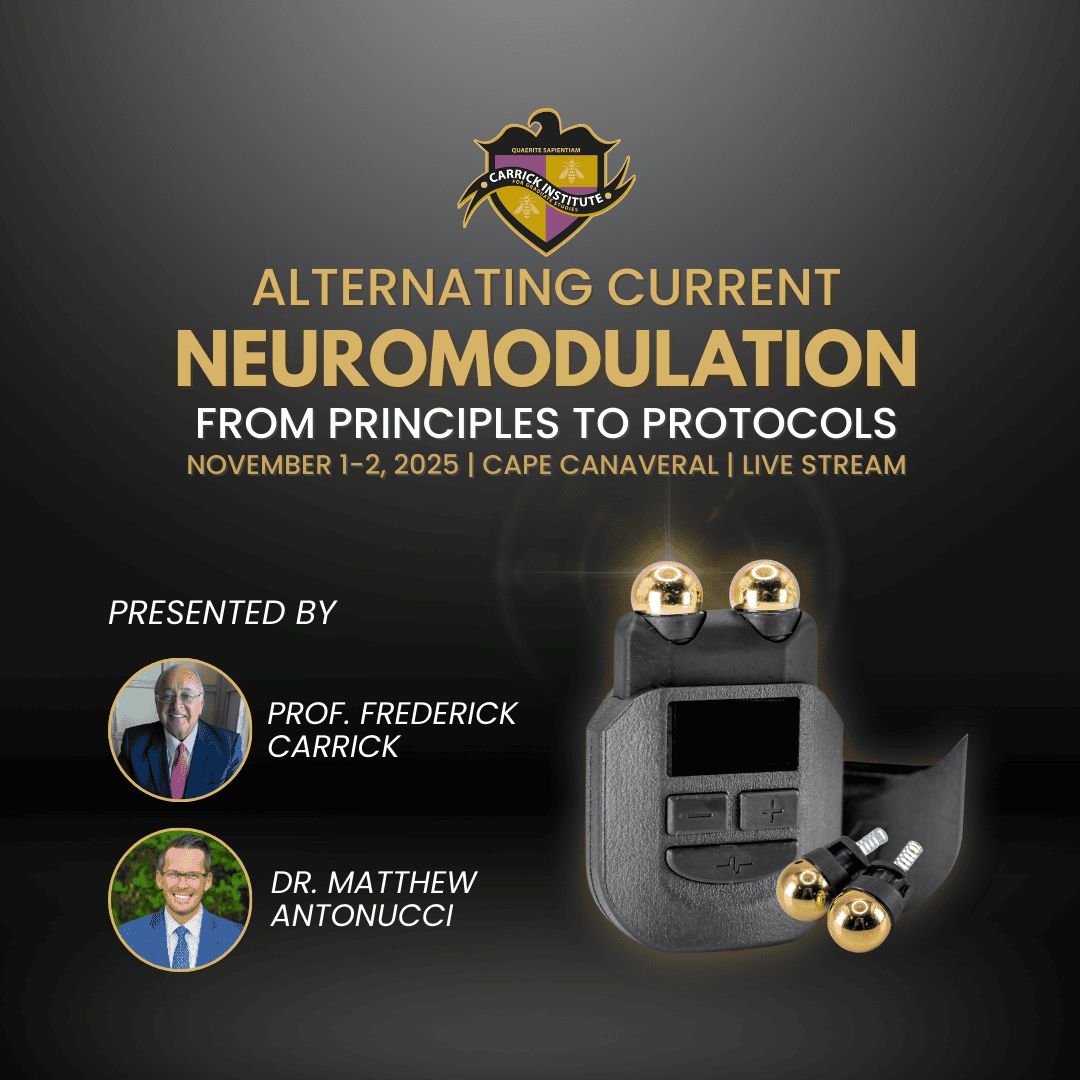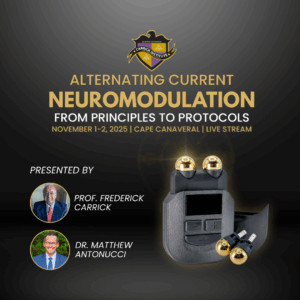Beneath the surface of this widely used modality lies a deeper science—one that too many providers think they understand but unknowingly misapply. And that gap could be limiting your outcomes more than you realize.
In Alternating Current Neuromodulation: From Principles to Protocols, we go back to the beginning, rebuilding your understanding of electric stimulation from the ground up. You’ll learn how waveform characteristics, stimulation parameters, and nerve targeting actually influence brain activity and neuroplasticity. More importantly, you’ll learn how to implement these principles precisely using Professor Carrick’s protocols, to enhance cognitive function, mood, motor output, and autonomic regulation.
Designed specifically for doctors trained in Functional Neurology, this isn’t a beginner’s overview—it’s a reboot. A chance to correct subtle but critical misconceptions, reignite your clinical creativity, and elevate your confidence with every case. Walk away with more than knowledge—walk away powerful, precise, and primed to stimulate change.
By the end of this 15-hour course, participants will be able to:
- Define the foundational principles of electrical nerve stimulation and its role in clinical neuromodulation.
- Differentiate between types of electrical current (AC vs. DC) and delivery methods (invasive vs. non-invasive).
- Describe the physiological effects of alternating current on excitable tissue.
- Explain the influence of waveform shape, pulse width, frequency, and amplitude on clinical outcomes.
- Identify appropriate electrical stimulation parameters for targeting sensory, motor, and central pathways.
- Compare various stimulation modalities including TENS, NMES, FES, IFC, and transcranial stimulation.
- Discuss the electrophysiological concepts underlying nerve excitability, depolarization, and conduction.
- Recognize the safety considerations and contraindications for using electrical stimulation in clinical care.
- Summarize the historical evolution of therapeutic electrical stimulation and its modern applications.
- Observe and analyze hands-on demonstrations of neuromodulation techniques for functional improvement.
- Evaluate the impact of electrode placement, skin impedance, and tissue depth on stimulation effectiveness.
- Demonstrate the ability to select and adjust electrical parameters based on clinical goals and patient response.
- Discuss the role of patterned afferent stimulation in promoting neuroplasticity and sensory-motor integration.
- Interpret the clinical use of AC protocols for conditions such as pain, incontinence, balance, and gait dysfunction.
- Apply neuromodulation strategies in patient care using evidence-informed protocols and critical decision-making.




